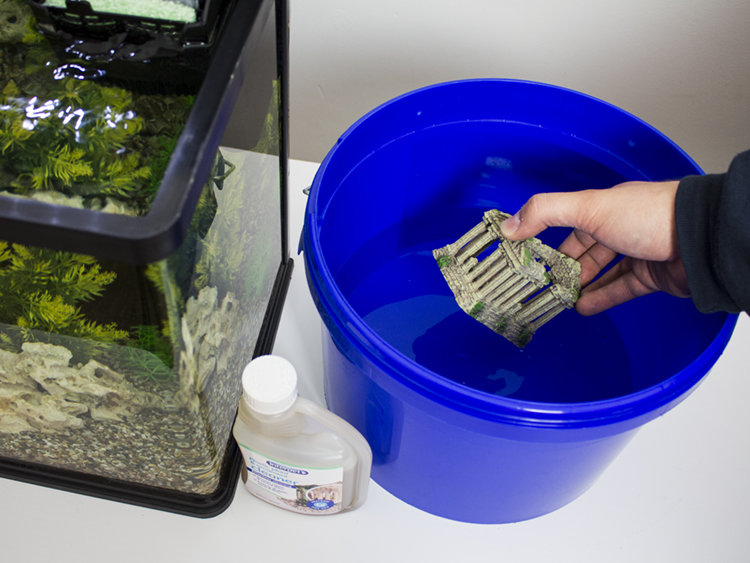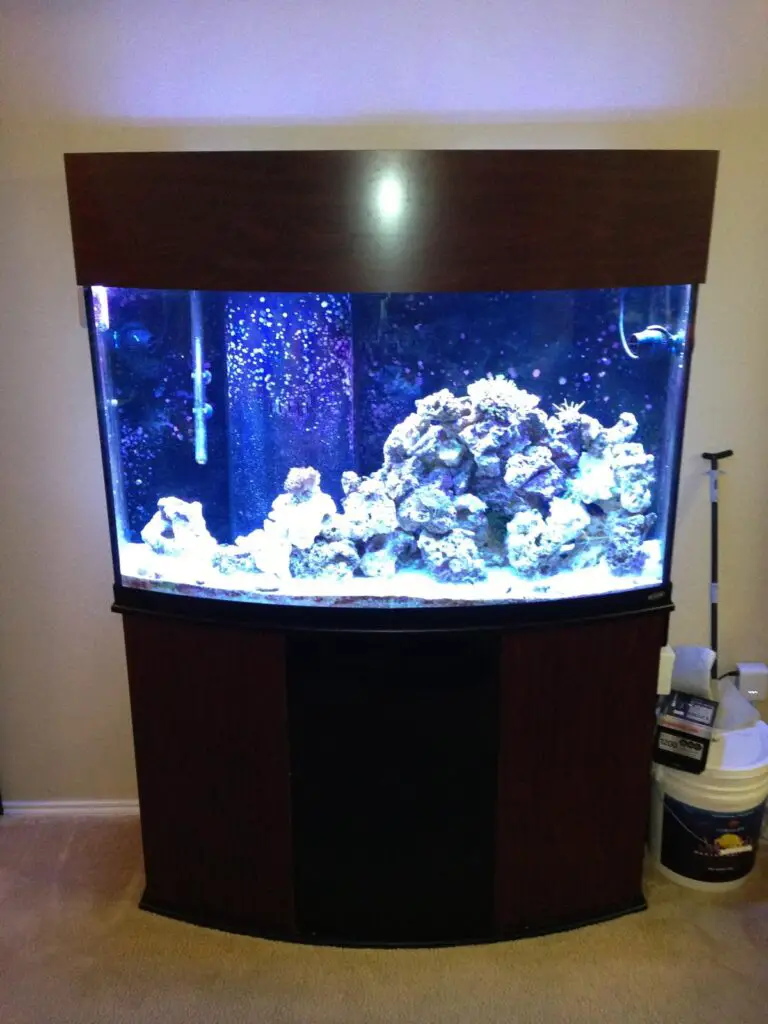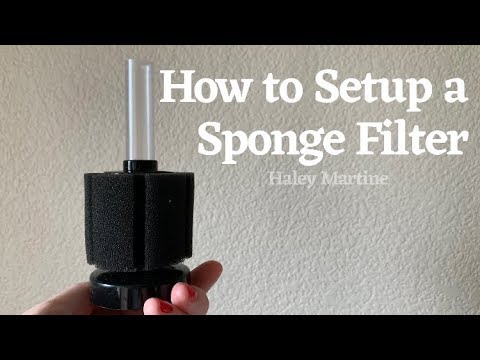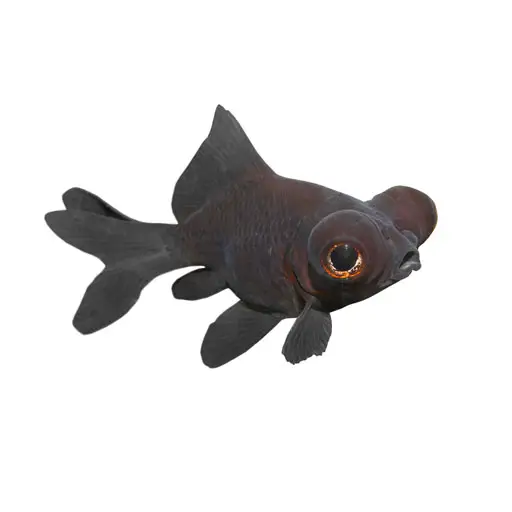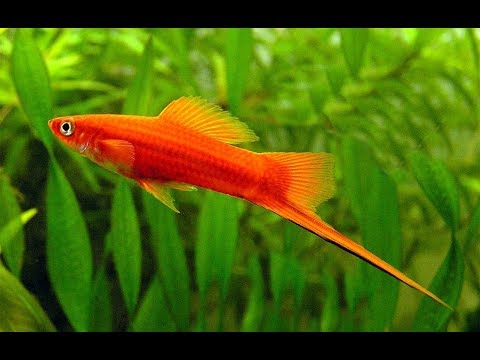How to Clean Algae off Plastic Aquarium Plants?
To clean algae off of plastic aquarium plants, you will need a few supplies. First, gather a bucket or bowl of warm water and mild dish soap. Next, remove the plant from the tank and place it in the soapy water solution.
Allow to soak for 10 minutes or more depending on how much algae is present on the leaves. After soaking, use a soft brush (or your hands) to scrub away any remaining debris or growths that are still present on the leaves/stems/roots of the plant. Finally rinse off with cold tap water and return back into your aquarium!
- Remove the Plastic Aquarium Plant: Gently remove the plastic aquarium plant from the tank and set it aside in a bowl or container with warm water.
- Clean off Algae: Take a soft bristled brush, such as an old toothbrush, and scrub away any algae growth on the surface of the plant. If necessary, use a mild soap solution to help loosen stubborn algae patches.
- Rinse Off Soap: Once you’ve removed all of the visible algae from your plastic aquarium plants, rinse them off with lukewarm water to make sure that all of the soap residue is gone before returning them back into your tank.
- Dry The Plants: Carefully dry off each plant using paper towels or another cloth material before placing it back into your fish tank setup for further decoration purposes!
Cleaning Plastic Aquarium Plants With Vinegar
Maintaining a clean aquarium is essential for the health of your fish, and that includes cleaning plastic aquarium plants. To keep them free from dirt and grime, vinegar can be used as an effective cleaning solution. Simply fill a bucket with lukewarm water and add some white vinegar; then submerge the plants in the mixture for 15-20 minutes before rinsing them off with fresh water.
This will help to remove any algae or other debris that may have built up on their surfaces over time.
Cleaning Plastic Aquarium Plants Dishwasher
Cleaning plastic aquarium plants in the dishwasher is a great way to spruce up your tank and make sure that your aquatic environment stays healthy. It’s important to use the lowest heat setting on your dishwasher, as this will help prevent any unnecessary damage or melting of the plastic. Additionally, be sure to remove any metal pieces from the plant before putting it in the dishwasher; these can become damaged when exposed to high temperatures.
Finally, you should always rinse off and dry the plants after they are done running through the cycle, as this helps them look their best!
Cleaning Aquarium Plants With Hydrogen Peroxide
Cleaning aquarium plants with hydrogen peroxide is an effective way to remove unwanted algae from their leaves and stems. Hydrogen peroxide breaks down the cell walls of the algae, killing it and preventing it from spreading. To use this method, mix a solution of 3% hydrogen peroxide with water in a spray bottle, then spray over the affected areas of your aquarium plants until they are completely covered.
Leave them for 10-15 minutes before rinsing off with clean water. This simple process should help keep your aquarium looking its best!
How to Clean Live Plants before Putting in Aquarium?
Live plants are a great way to add color and beauty to your aquarium, but they also can harbor bacteria and other microorganisms that can be harmful to your fish. To ensure the health of your fish, it is important to clean live plants before introducing them into the tank. Start by removing any dead leaves or stems from the plant and then rinse off with lukewarm water.
Next, soak the plant in a solution of one part bleach per 10 parts water for about 15 minutes and then rinse thoroughly again. Finally, let dry completely before placing in the aquarium.
How to Clean Aquarium Plants of Snails?
If you have snails in your aquarium, the best way to clean them off of your plants is to remove the affected foliage from the tank and submerge it in a bucket or container filled with dechlorinated water. To encourage snails to come off of the leaves, you can add some aquarium salt or a few drops of vinegar into the water. Leave for about 30 minutes before rinsing away any debris or remaining pests with freshwater.
Lastly, put your plant back into its original container and give it a thorough rinse before returning it to its home in your tank!
How to Clean Aquarium Plants Without Bleach?
Cleaning aquarium plants without bleach is possible and easy to do. Start by filling a bucket with warm water and adding a few drops of liquid dish soap, then take the plants out of the tank one at a time and swish them in the soapy water. This will remove any debris or build up from their leaves.
Once done, rinse them thoroughly with clean water to make sure all of the soap is gone before returning them back into your tank.
How to Clean Plastic Aquarium Decorations?
To keep your aquarium decorations looking their best, it’s important to clean them regularly. Fortunately, plastic aquarium decorations are easy to clean – simply rinse them in warm water and scrub gently with a soft brush or cloth if needed. If you need to remove stubborn grime, soak the decoration in a solution of one teaspoon of baking soda per gallon of warm water for about 15 minutes before rinsing off any remaining residue.
After cleaning, be sure to thoroughly rinse the item with fresh tap water and let it air dry before returning it back into your tank.
How to Clean Algae off Live Aquarium Plants?
Cleaning algae off of live aquarium plants is an important part of maintaining a healthy aquatic environment. To do this, first remove the plant from its pot and place it in a bucket filled with warm water. Then use tweezers or a small brush to gently scrub away any visible algae from the leaves, stems and roots.
Rinse the plant thoroughly afterwards with fresh water and then replant it in your tank for continued growth!

Credit: pethelpful.com
How Do You Clean Algae off Plastic Aquarium Decorations?
Cleaning plastic aquarium decorations is a necessary part of aquarium maintenance. Algae can accumulate and make the decorations look unsightly, as well as contribute to water quality issues. To clean algae off plastic aquarium decorations, start by removing them from the tank and rinsing them in warm water.
For stubborn algae spots, you may need to use an aquatic safe scrubbing pad or brush to loosen the algae before rinsing with warm water again. For particularly strong algal growths, you may need to soak your decorations in an aquatic safe cleaning solution for up to 30 minutes before scrubbing and rinsing with warm water again. After cleaning your decorations it is important that they are thoroughly dried so no remaining moisture remains on the surfaces which could allow further algal growths.
Finally place the cleaned decor back into your tank ensuring all surfaces have been adequately exposed to light so that any residual particles of algae do not regrow quickly over time.
How Do You Clean Plastic Aquatic Plants?
To ensure that your plastic aquatic plants stay healthy and vibrant, it is important to give them a proper cleaning on a regular basis. The first step in cleaning plastic aquatic plants is to take them out of the tank and rinse them with room temperature water. After rinsing the leaves and stems, you can use an old toothbrush or other soft bristled brush to gently scrub away any dirt or debris from the surface of the leaves and stems.
Once you have finished scrubbing off all visible dirt and debris, place your plants into a bucket of warm water mixed with aquarium safe algae remover solution. Allow your plants to soak for 5-10 minutes before removing them from the bucket and placing them back in their tank. You should also make sure that any new plastic aquatic plants are properly disinfected before being placed into your tank; you can do this by soaking them in a solution of 1 part bleach diluted with 10 parts water for 10 minutes before rinsing thoroughly in fresh water afterwards.
Following these steps will help keep your plastic aquatic plants looking beautiful!
How To Clean Plastic Aquarium Plants and Ornaments without scrubbing, Ultrasonic Cleaners get it ALL?
Conclusion
Cleaning algae off of plastic aquarium plants is a necessary part of maintaining an aquarium. The process may seem daunting, but with proper cleaning supplies and technique, it can be done quickly and easily. With patience and dedication to keeping your tank clean, you will have crystal-clear water that looks beautiful for years to come.
